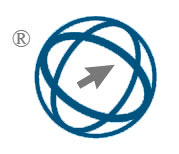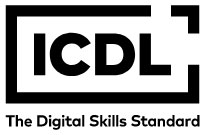Optimizing Data Exploration by Unifying Clustering and Association Rule Extraction
Abstract
Full Text:
PDFReferences
Hassan Ibrahim Hayatu, Abdullahi Mohammed, and Ahmad Barroon Ismaeel. Big data clus-tering techniques: Recent advances and survey. Machine Learning and Data Mining for Emerging Trend in Cyber Dynamics, pages 57–79, 2021. doi:10.1007/ 978-3-030-66288-2_3.
A. K. Jain, A. Topchy, M. H. C. Law, and J. M. Buhmann, “Landscape of clustering algo-rithms,” in Proceedings of the 17th International Conference on Pattern Recognition, 2004. ICPR 2004., Jan. 2004.DOI: 10.1109/icpr.2004.1334073
T. Lange, V. Roth, M. L. Braun, and J. M. Buhmann, “Stability-Based Validation of Clus-tering Solutions,” Neural Computation, vol. 16, no. 6, pp. 1299–1323, Jun. 2004. DOI: 10.1162/089976604773717621
F. Li, J. Qin, and Y. Kang, “Closed-Loop Hierarchical Operation for Optimal Unit Com-mitment and Dispatch in Microgrids: A Hybrid System Approach,” arXiv.org, Dec. 2018. [Online]. Available: https://arxiv.org/abs/1812.09928
H. Yin, A. Aryani, S. Petrie, A. Nambissan, A. Astudillo, and S. Cao, “A Rapid Review of Clustering Algorithms,” arXiv.org, Jan. 2024. [Online]. Available: https://arxiv.org/abs/2401.07389
M. H. Hansen and B. Yu, “Model Selection and the Principle of Minimum Description Length,” Journal of the American Statistical Association, vol. 96, no. 454, pp. 746–774, Jun. 2001. DOI: 10.1198/016214501753168398
B. G. Tabachnick and L. S. Fidell, Using multivariate statistics, 6th ed. Harlow, England: Pearson Education Limited, 2013.
C. C. Aggarwal, C. K. Reddy, and T. Francis, Data Clustering Algorithms and Applications. Boca Raton, FL: Chapman And Hall/CRC, 2018.
H. Hu, J. Liu, X. Zhang, and M. Fang, “An Effective and Adaptable K-means Algorithm for Cluster Analysis,” Pattern Recognition, p. 109404, Feb. 2023. DOI: 10.1016/j.patcog.2023.109404
K. Sharma, S. Saini, S. Sharma, H. S. Kang, M. Bouye, and D. Krah, “Big Data Analytics Model for Distributed Document Using Hybrid Optimization with K-Means Clustering,” Wireless Communications and Mobile Computing, vol. 2022, p. e5807690, Jun. 2022. DOI: 10.1155/2022/5807690
S. Guha, R. Rastogi, and K. Shim, “Rock: A robust clustering algorithm for categorical at-tributes,” In- formation Systems, vol. 25, no. 5, pp. 345–366, Jul. 2000. DOI: 10.1016/s0306-4379(00)00022-3
A. K. Jain, “Data clustering: 50 years beyond K- means,” Pattern Recognition Letters, vol. 31, no. 8, pp. 651–666, Jun. 2010. DOI: 10.1016/j.patrec.2009.09.011
M. L. Yiu and N. Mamoulis, “Clustering objects on a spatial network,” Jan. 2004. DOI: 10.1145/ 1007568.1007619
DOI: https://doi.org/10.31449/inf.v49i18.5964

This work is licensed under a Creative Commons Attribution 3.0 License.









